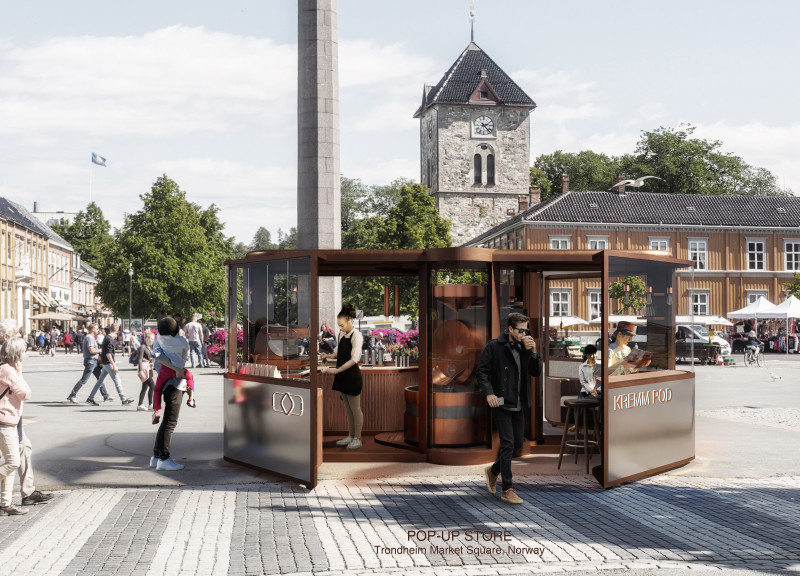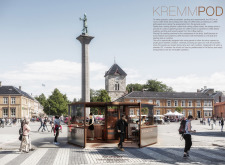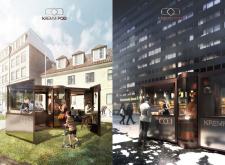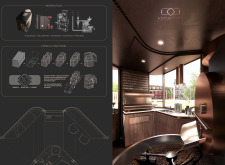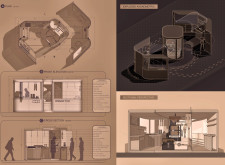5 key facts about this project
### Project Overview
KREMM POD is a coffee kiosk located in Trondheim Market Square, Norway, designed to provide an interactive environment for specialty coffee enthusiasts and the public. The project emphasizes transparency in the coffee roasting process, aiming to educate visitors about the various stages of coffee bean processing, from roasting to brewing. This strategic location encourages engagement and enhances the coffee culture within the community.
### Functional Design
The design incorporates a central coffee roaster, which serves as both a functional element and a focal point, reinforcing the overall architectural identity of the kiosk. Its flexible configuration allows for an open-air experience during favorable weather, while providing shelter in inclement conditions, thus addressing the local climate effectively. Modular features enable the kiosk to adapt to varying visitor needs, transforming from a compact space to a lounge-like environment through the use of opening panels.
### Material Selection
Material choices prioritize both aesthetics and functionality. Warm wood finishes create an inviting atmosphere, while industrial glass panels facilitate transparency and visibility into the roasting process. Durable metal components, potentially copper or brass, contribute to the modern aesthetic and structural integrity. The application of phenolic resin in the interior surfaces ensures longevity and ease of maintenance, while insulated glass supports energy efficiency, essential for maintaining an optimal environment for coffee preparation.


